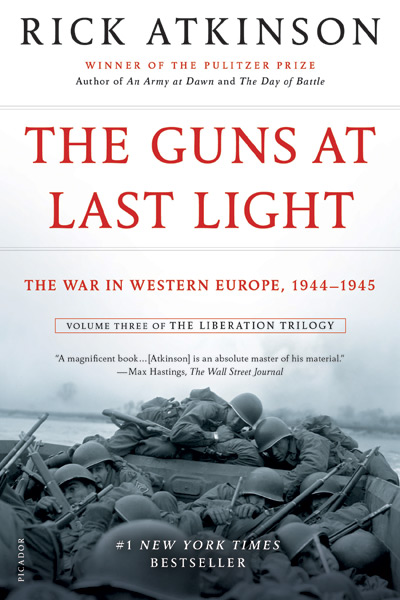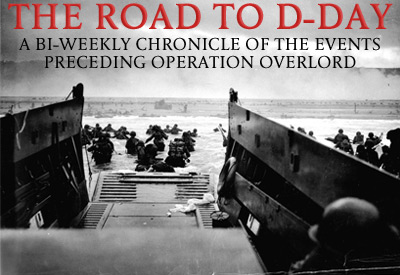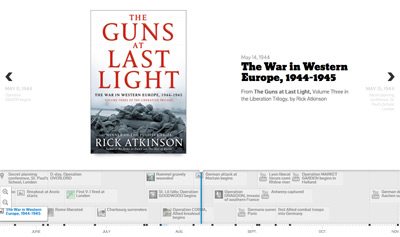Historical Documents from The Guns at Last Light
The images in this slideshow are scans of the original documents. The chapter numbers indicate where, in The Guns at Last Light, the document is relevant.
The following documents are included in this slideshow:
- A letter from Maj. Gen. R.O. “Tubby” Barton, dated 13 July 1944, to Eleanor Roosevelt, describing the circumstances of Brig. Gen. Theodore Roosevelt’s death in Normandy that day.
- A note from Lt. Gen. Walter Bedell “Beetle” Smith, dated Oct. 31, 1946, to Maj. Gen. A.D. Bruce, explaining his unusual nickname, which he says supplants his original nickname, “Fishface.”
- An undated statement from Brig. Gen. Doyle O. Hickey recounting the death of Maj. Gen. Maurice Rose, commander of the 3rd Armored Division, on 30 March 1945.
- Correspondence in March 1945 from the Dwight D. Eisenhower Presidential Library between Eisenhower and Maj. Gen. Maurice Rose about the quality of Sherman tanks compared to German Panther tanks. Eisenhower displays a superficial knowledge on this subject less than two months before the end of the war (and two weeks before Rose’s death). Rose also comments on other equipment in the American inventory.
- Transcript of a telephone conversation on 16 Sept. 1944, between Lt. Gen. Alexander M. Patch and Maj. Gen. Lucian K. Truscott, Jr., about the latter’s distress over the American high command’s reluctance to immediately capture the Belfort Gap and Alsace.
- Correspondence between Gen. Dwight D. Eisenhower and Lt. Gen. George S. Patton, Jr., over the latter’s proposal to provide French brothels with penicillin. The supreme commander disapproves.
- A secret memo to Secretary of War Henry Stimson, dated 18 July 1944, from Robert A. Lovett, assistant secretary of war for air, regarding self-sealing gasoline tanks on troop carrying aircraft. Other documents on this subject include a letter to Stimson, dated 1 June 1944, from Lt. Col. David N. Laux, regarding what he says as poor policy decisions. This issue will arise again with a vengeance during Operation VARSITY PLUNDER in March 1945.
- A sketch map, presumably drawn by a U.S. Army engineer in March 1945, of the captured bridge over the Rhine at Remagen, Germany.









